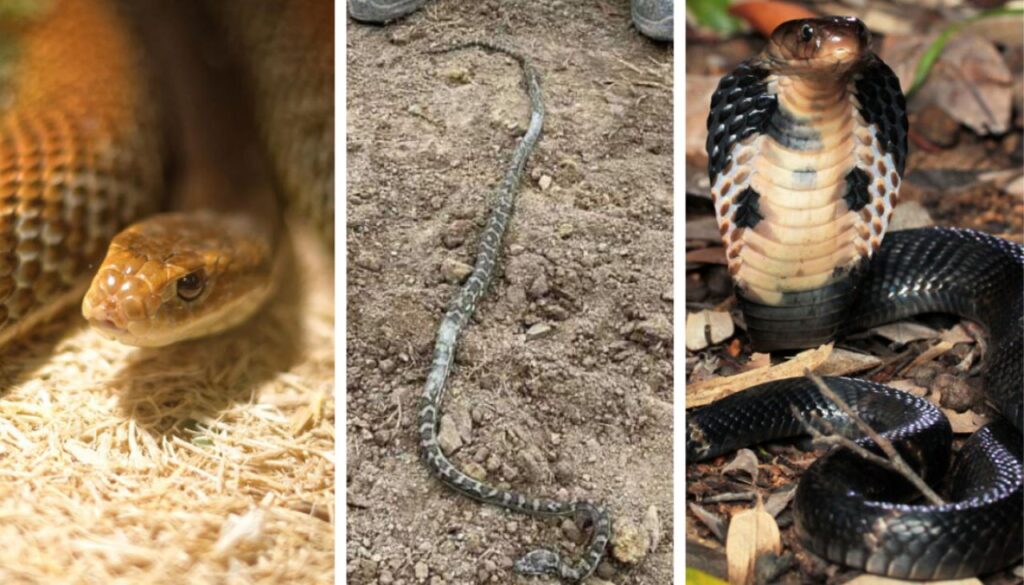Snakes have long been considered one of the horrors of man. There are many different types of snakes in the world and each species will have different properties and toxins. The article The 10 Most Common Poisonous Snakes will list the common venomous snakes in the world today.
1. Dispholidus typus
Dispholidus typus, also known as the Boomslang or Tree Snake, is a venomous species of snake found in sub-Saharan Africa. It is a member of the Colubridae family and is known for its highly potent venom, which it uses to kill its prey. The Boomslang is a rear-fanged snake, meaning that it has enlarged, hollow teeth located at the back of its mouth that it uses to inject venom into its prey.
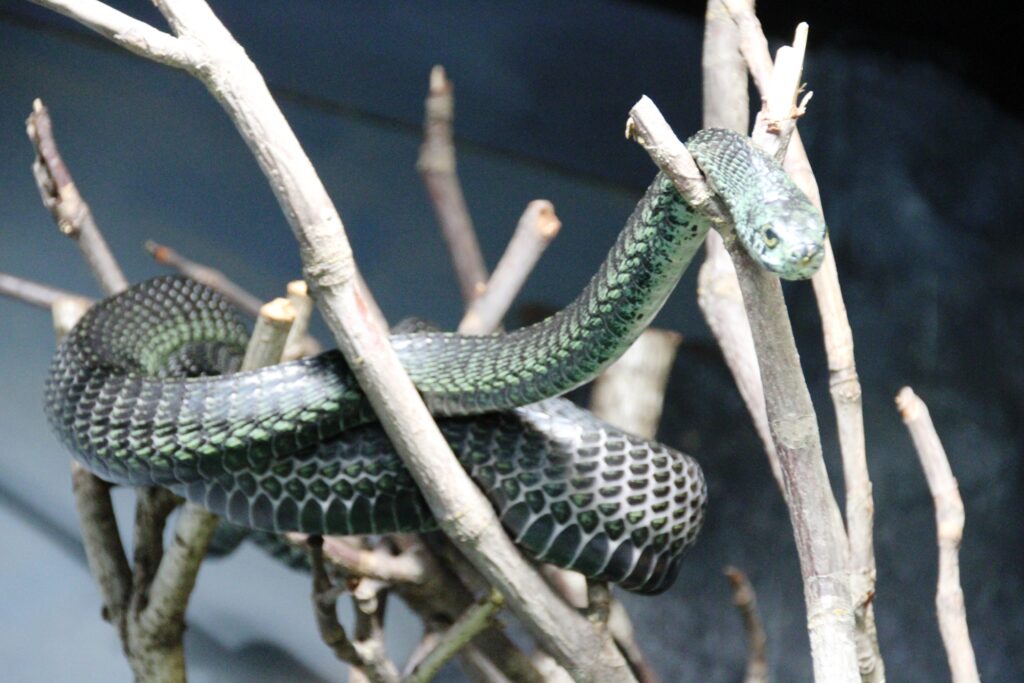
It is a slow-moving, arboreal species that feeds primarily on birds and small mammals. Boomslang venom is a hemotoxin, which means that it attacks the blood and causes bleeding disorders. A bite from this snake can be potentially lethal if not treated promptly.
2. Blue Malayan Coral Snake
The Blue Malayan Coral Snake (Calliophis bivariate) is a venomous species of snake found in Southeast Asia. It is a member of the Elapidae family, which includes some of the most venomous snakes in the world, such as cobras, mambas, and taipans.
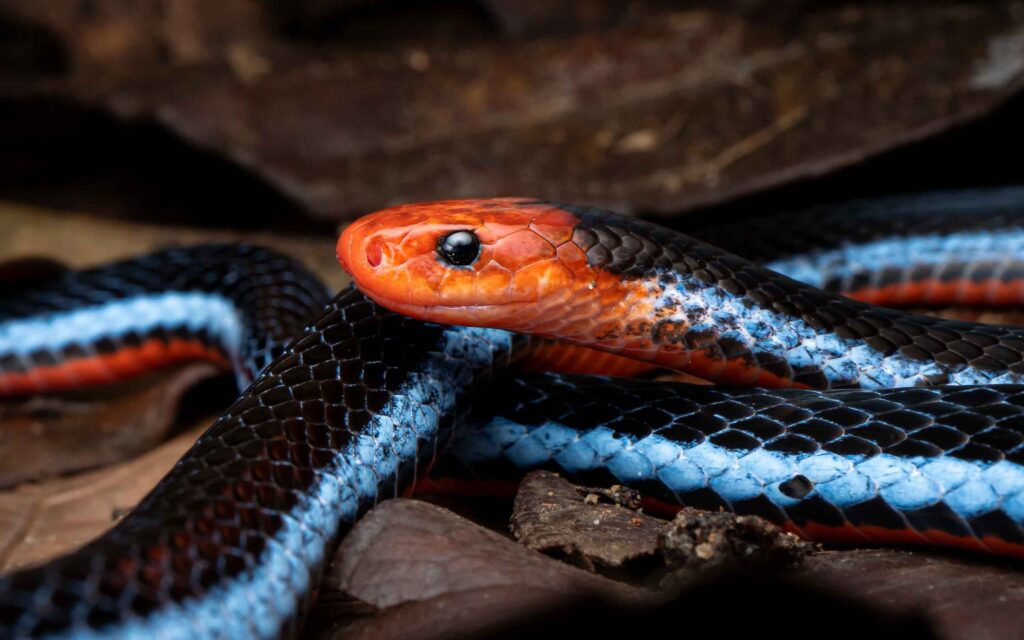
The Blue Malayan Coral Snake is a small, slender species that grows to an average length of about 2-3 feet. It is known for its bright blue and black bands, which are thought to help it blend in with the forest floor and leaf litter.
Like other coral snakes, the Blue Malayan Coral Snake is a burrowing species that feeds primarily on other small snakes and lizards. Its venom is a neurotoxin, which means that it attacks the nervous system and can cause respiratory failure. A bite from this snake can be potentially lethal if not treated promptly.
3. Saw-Scaled Viper
The Saw-Scaled Viper (Echis carinatus) is a venomous snake species found in many parts of Africa, the Middle East, and Asia. It is a small, stocky snake that grows to an average length of about 2-3 feet. It is named for the distinctive saw-like scales on its body, which it rubs together to produce a hissing sound as a warning to predators.

The Saw-Scaled Viper is a nocturnal species that feeds on small mammals, birds, and lizards. Its venom is a haemotoxin, which means that it attacks the blood and causes bleeding disorders. A bite from this snake can be potentially lethal if not treated promptly.
The Saw-Scaled Viper is responsible for more human deaths in its native range than any other snake species. This is the next snake in The 10 Most Common Poisonous Snakes.
4. Russell’s Viper
Russell’s Viper (Daboia russelii) is a venomous snake species found in many parts of South and Southeast Asia. It is a medium to large-sized snake that grows to an average length of about 4-6 feet but can reach lengths of up to 8 feet. It is named for the British herpetologist Patrick Russell, who first described the species.
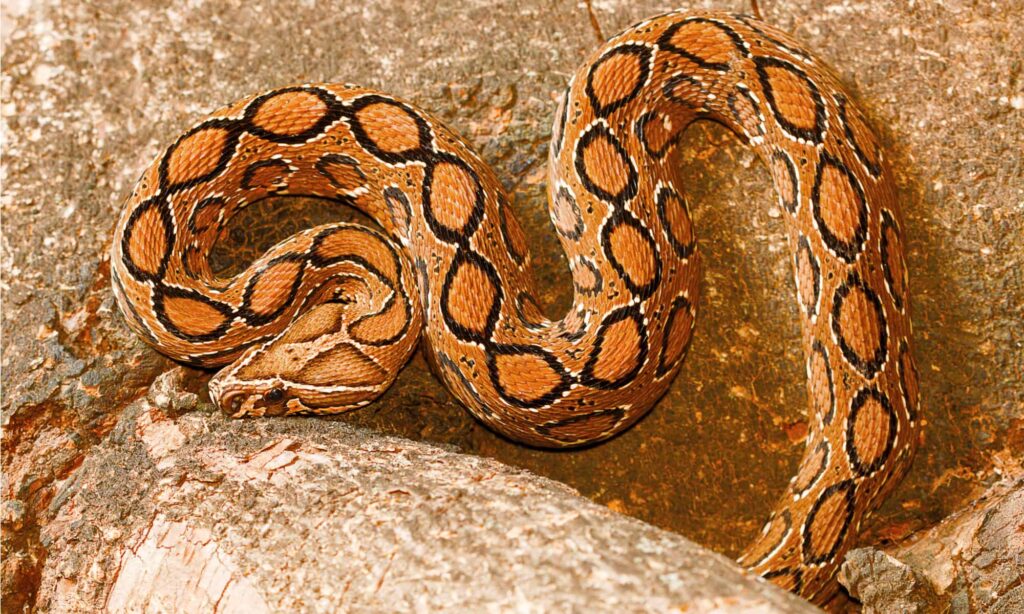
Russell’s Viper is a terrestrial species that is often found in agricultural areas, where it feeds on rats and other small mammals. Its venom is a haemotoxin, which means that it attacks the blood and causes bleeding disorders. A bite from this snake can be potentially lethal if not treated promptly. Russell’s Viper is responsible for a large number of snakebite deaths in its native range.
5. Fer-de-Lance
The Fer-de-Lance (Bothrops asper) is a venomous snake species found in many parts of Central and South America. It is a large, heavy-bodied snake that grows to an average length of about 6-8 feet, but can reach lengths of up to 10 feet.
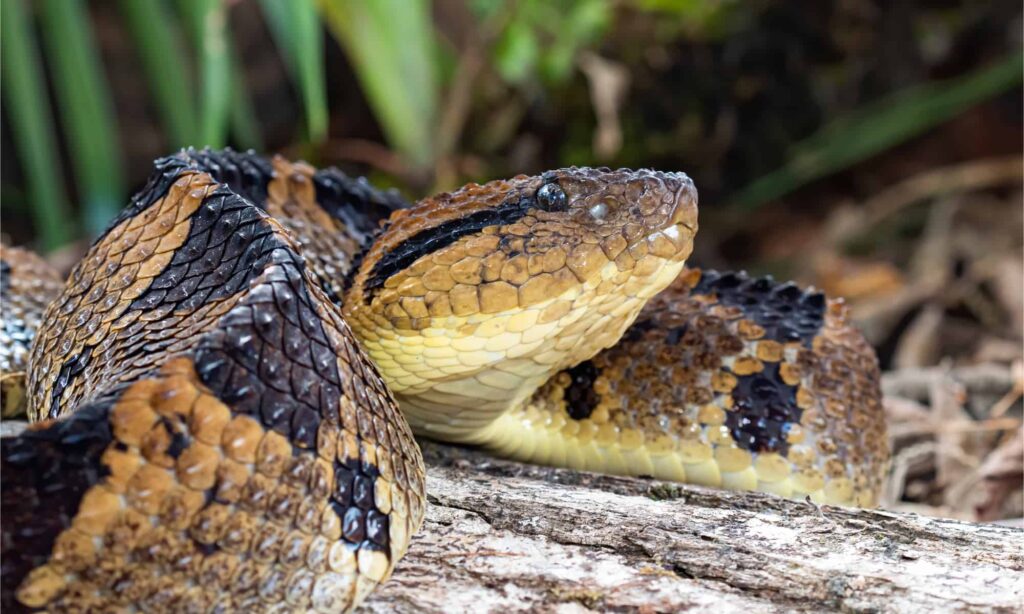
It is a terrestrial species that is often found in forests, where it feeds on small mammals, birds, and reptiles. Its venom is a haemotoxin, which means that it attacks the blood and causes bleeding disorders. A bite from this snake can be potentially lethal if not treated promptly.
The Fer-de-Lance is responsible for a large number of snakebite deaths in its native range. It is also known by a variety of common names, including Terciopelo, Barba Amarilla, and Cascabel. This is the next snake in The 10 Most Common Poisonous Snakes.
6. Cottonmouth (Water Moccasin)
The Cottonmouth (Agkistrodon piscivorus), also known as the Water Moccasin, is a venomous snake species found in the southeastern United States. It is a medium to large-sized snake that grows to an average length of about 3-4 feet but can reach lengths of up to 6 feet. It is a semi-aquatic species that are often found near water sources, such as swamps, marshes, and streams.
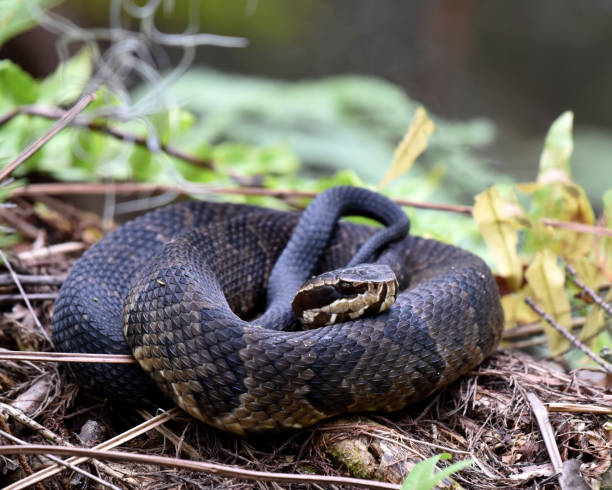
Its venom is a haemotoxin, which means that it attacks the blood and causes bleeding disorders. A bite from this snake can be potentially lethal if not treated promptly. The Cottonmouth gets its common name from the white lining of its mouth, which it displays as a warning when it feels threatened. It is a member of the pit viper family, which also includes rattlesnakes and copperheads.
7. Eastern Coral Snake
The Eastern Coral Snake (Micrurus fulvius) is a venomous snake species found in the southeastern United States. It is a small, slender species that grows to an average length of about 2-3 feet. It is named for the bright red, yellow, and black bands that encircle its body, which is thought to help it blend in with the forest floor and leaf litter.
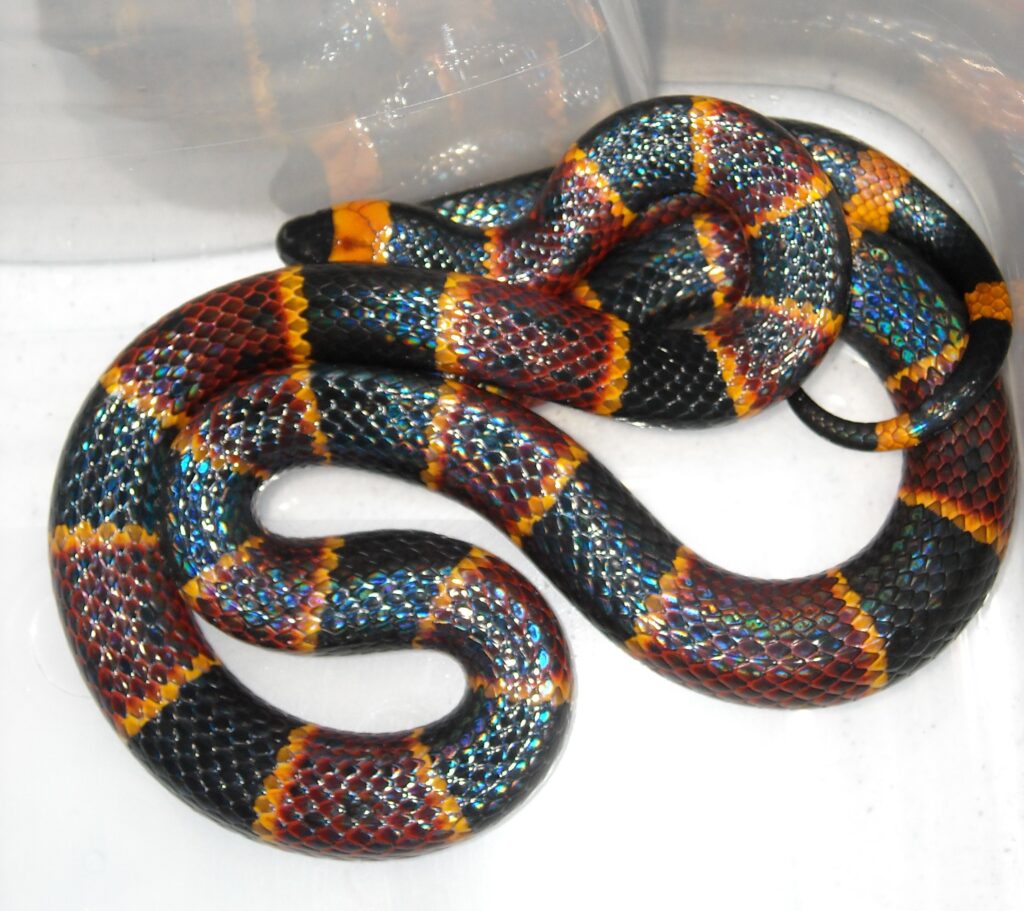
The Eastern Coral Snake is a burrowing species that feeds primarily on other small snakes and lizards. Its venom is a neurotoxin, which means that it attacks the nervous system and can cause respiratory failure. A bite from this snake can be potentially lethal if not treated promptly.
The Eastern Coral Snake is closely related to the Western Coral Snake (Micruroides euryxanthus), which is found in the southwestern United States. This is the next snake in The 10 Most Common Poisonous Snakes.
8. Common Death Adder
The Common Death Adder (Acanthophis antarcticus) is a venomous snake species found in Australia and New Guinea. It is a small to medium-sized snake that grows to an average length of about 2-3 feet but can reach lengths of up to 4 feet. It is a terrestrial species that is often found in dry, rocky areas, where it feeds on small mammals, birds, and reptiles.
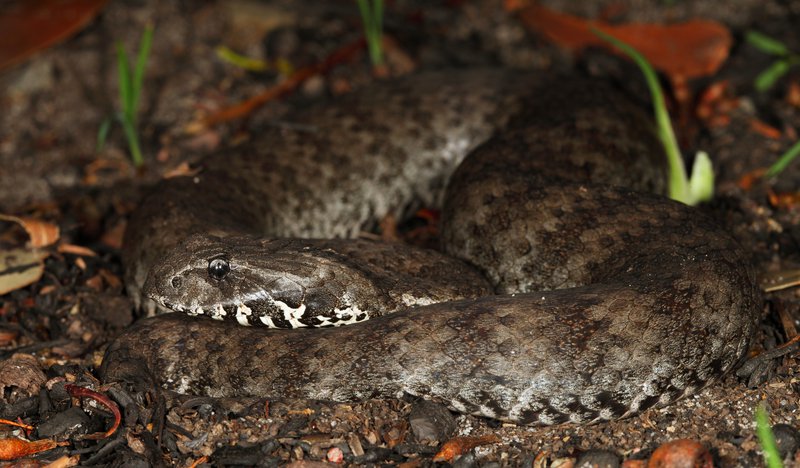
Its venom is a neurotoxin, which means that it attacks the nervous system and can cause respiratory failure. A bite from this snake can be potentially lethal if not treated promptly. The Common Death Adder gets its common name from its ability to deliver a very rapid and lethal bite. It is a member of the elapid family, which also includes cobras, mambas, and taipans.
9. South American Bushmaster
The South American Bushmaster (Lachesis muta) is a venomous snake species found in many parts of Central and South America. It is a large, heavy-bodied snake that grows to an average length of about 10-12 feet, but can reach lengths of up to 14 feet. It is a terrestrial species that is often found in forests, where it feeds on small mammals, birds, and reptiles.
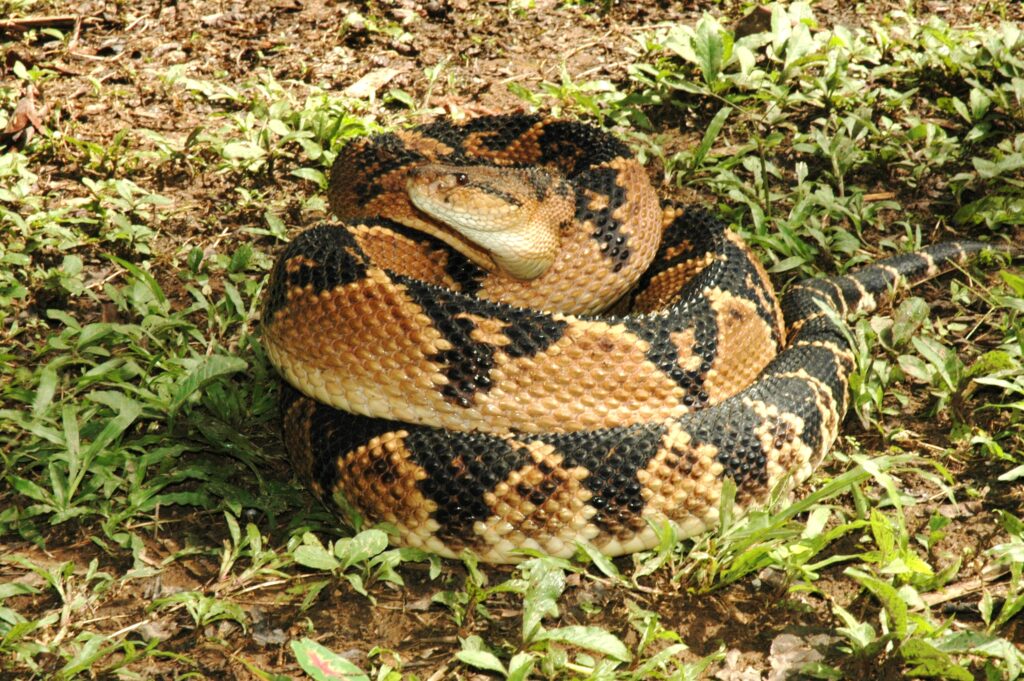
Its venom is a haemotoxin, which means that it attacks the blood and causes bleeding disorders. A bite from this snake can be potentially lethal if not treated promptly. The South American Bushmaster is the largest venomous snake in the Americas and is known for its aggressive behavior.
It is a member of the pit viper family, which also includes rattlesnakes and cottonmouths. This is the next snake in The 10 Most Common Poisonous Snakes.
10. King Cobra
The King Cobra (Ophiophagus hannah) is a venomous snake species found in many parts of South and Southeast Asia. It is the longest venomous snake in the world, with an average length of about 10-13 feet, but individuals up to 18.5 feet long have been recorded. It is a terrestrial species that is often found in forests, where it feeds on other snakes, including venomous species.
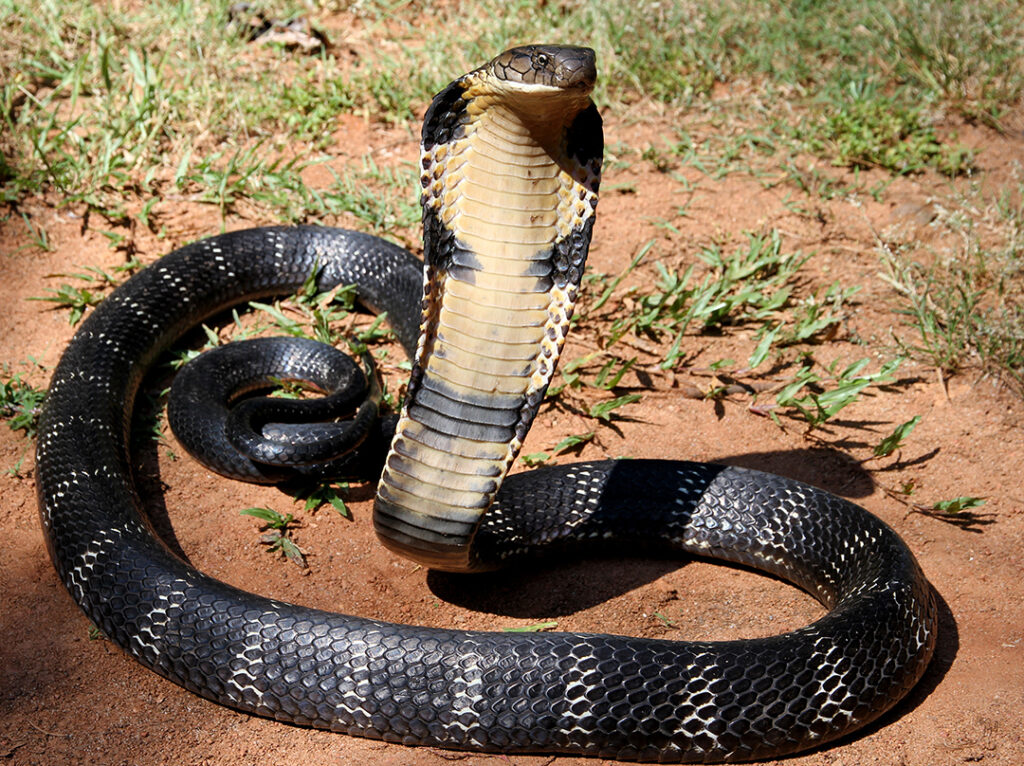
Its venom is a neurotoxin, which means that it attacks the nervous system and can cause respiratory failure. A bite from this snake can be potentially lethal if not treated promptly. The King Cobra is known for its ability to raise the front half of its body off the ground and spread a hood when threatened. It is a member of the elapid family, which also includes cobras, mambas, and taipans.
Hopefully, the article The 10 Most Common Poisonous Snakes will provide you with useful information.

